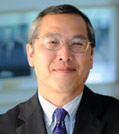
I hope that title caught your attention and, now, for some reason, here you are, reading this column. Well, I figured you might start reading. Why? Because as professional counselors and counselor educators, you are inquisitive, you like to know what is going on and, as good advocates, you are problem solvers. I appreciate all of those qualities about the members of this outstanding association.
And since you have continued to this second paragraph, I will now ask you to both engage and respond. At ACA, we are blessed to have a growing number of student members. In the long run, this bodes well for the profession in many ways. While those of us on the “grayer” side of our careers begin to think of life’s activities after full-time employment, it is good to know that others are beginning to fill the proverbial pipeline and preparing to take the place of those who are retiring. In terms of the counseling profession, I like the idea that student membership in ACA continues to grow. Of course, the organization subsidizes each of those student memberships. We do so in hopes that these student members will remember the support being provided to them today even after they graduate. We need to ensure we are doing everything we can to see that student members move first into the “new professional” membership category and then ultimately continue on as professional members. Quite frankly, that doesn’t always happen.
Not moving from student membership to new professional membership and then on to professional membership in ACA means that a disconnect occurs after a student graduates. The obvious answer is that this happens due to five simple letters: M-O-N-E-Y. Even allowing first-year professionals the same dues they paid as students is not enough to get them to stay.
While many students eventually return to ACA as professional members, the lag time between those periods is something of great concern to us. We need students to see the value in maintaining their membership on a continuous basis, both during and after the matriculation process. This is where you come in (hopefully, you aren’t sorry that you kept reading!).
If you are currently a student member, were previously a student member or even if you were never a student member, I want your ideas, thoughts and input as to what ACA needs to do to ensure that individuals retain their membership as they move from graduate school to full-time careers in the profession. My phone number and e-mail address are listed at the end of this column. Let’s find out what students like about being members of ACA and what it would take for them to maintain that membership continuously throughout their careers as professionals.
I am turning to all of you because of your interest, your creativity and your desire to keep growing the counseling profession. You do such a great job of advocating for your clients and students that I figured engaging in some advocacy for your professional association would be a natural fit. You can also rest assured that your ACA leadership and staff are looking at how best to address the need to have student members maintain a continuous relationship with ACA as they emerge into the profession.
Let me thank you in advance for any input or suggestions you make.
I also want to express my appreciation for your patience as ACA made some important “back end” improvements to our website www.counseling.org and membership database over the past few months. We did our best to keep our “downtime” to a minimum, but we also realized the changes were necessary if we were going to continue meeting the needs of those who access resources and make transactions over our website.
I hope you will contact me with any comments, questions or suggestions that you might have. Please contact me via e-mail at ryep@counseling.org or by phone at 800.347.6647 ext. 231.
Thanks and be well.
